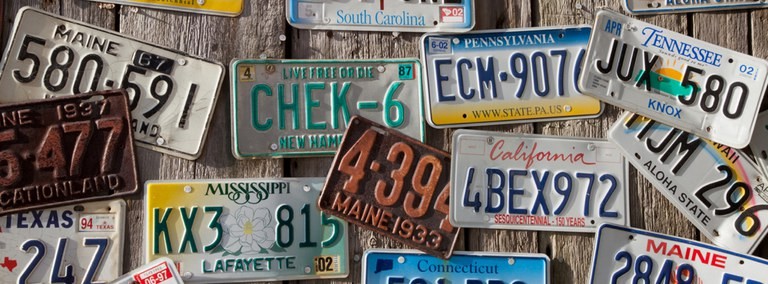Discovering smoke billowing from your car can be alarming. Beyond the immediate concern, a smoking car often signals underlying engine or emission problems that need prompt attention. Many car owners immediately worry about the cost of diagnosis. The good news is, there are ways to approach diagnosing a smoking car, including exploring options for a free car diagnostic. This guide from Car Repair Online will walk you through initial steps and resources to help understand your smoking car situation without immediately reaching for your wallet.
Understanding Why Your Car is Smoking
Before seeking a diagnostic, it’s helpful to understand why cars smoke. The color and type of smoke can offer clues about the issue:
- Blue Smoke: Often indicates burning oil. This could be due to worn piston rings, valve stem seals, or other internal engine wear. Oil leaks into the combustion chamber and burns, producing blue smoke.
- White Smoke: Can be caused by burning coolant. This might suggest a head gasket leak, a cracked cylinder head, or a damaged engine block allowing coolant to enter the combustion chamber. In cold weather, thin white smoke on startup is often just condensation, but thick, sweet-smelling white smoke is a concern.
- Black Smoke: Usually points to burning excessive fuel, meaning your engine is running “rich.” This could be due to problems with fuel injectors, air filters, or sensors in the fuel or air intake system.
- Grey Smoke: Can be trickier to diagnose, sometimes indicating burning transmission fluid (if automatic transmission) or a mix of oil and coolant issues.
Identifying the smoke color can give you a starting point for your diagnostic journey.
Initial Free Checks You Can Do Yourself
Before heading to a mechanic, perform these free preliminary checks:
- Visual Inspection: Carefully look around your engine bay. Are there any obvious leaks, loose hoses, or signs of damage? Check under your car for dripping fluids. Note the location and color of any leaks.
- Fluid Level Checks: Check your engine oil and coolant levels. Low oil could contribute to blue smoke. Low coolant, especially with white smoke, is a strong indicator of coolant burning. Also, check your transmission fluid (if automatic) – low or burnt fluid could relate to grey smoke in some cases. Note the color and smell of each fluid as well.
- Smell the Smoke: Carefully (and from a safe distance) try to note the smell of the smoke. Burning oil has a distinct acrid smell. Burning coolant often has a sweet smell. The smell of unburnt fuel is gasoline-like.
- Listen to Your Engine: Are there any unusual noises accompanying the smoke, such as knocking, hissing, or sputtering? These sounds can provide additional clues.
These initial checks are free and can provide valuable information when you do seek further diagnostics.
Exploring Free Diagnostic Options (Limited Scope)
While a comprehensive car diagnostic typically involves specialized tools and expertise, there are limited “free” options that can offer some initial insight:
-
Auto Parts Store OBD-II Scan: Many auto parts stores offer free OBD-II (On-Board Diagnostics II) scans. OBD-II is a system in modern cars that monitors various components, including the emission control system. The scanner reads trouble codes stored by your car’s computer. However, it’s crucial to understand the limitations. A free scan will give you generic codes, but:
- It won’t pinpoint the exact cause. Codes indicate a system or area with a problem, not the specific failed part.
- It doesn’t cover everything. OBD-II focuses on emissions-related issues. It might not detect mechanical problems causing smoke if they don’t directly trigger emission faults immediately.
- Interpretation is key. Simply getting codes isn’t a diagnosis. You need to understand what the codes mean in the context of your smoking car.
Despite limitations, a free OBD-II scan at an auto parts store is a readily available starting point to see if any emission-related codes are present.
-
Vehicle Pollution Management Division (VPMD) Resources (Contextualized): The original article mentions VPMD offering a free retest after a failed emission test in Albuquerque-Bernalillo County. While this is geographically specific, the concept is relevant. Some areas or programs might offer free emission checks or resources related to vehicle pollution. Investigate local government or environmental agencies in your area. They might have programs or information that indirectly offers some diagnostic help related to emission issues, although not directly for “smoking car” diagnosis in general. This is less likely to be a direct “free diagnostic” for a smoking car, but worth a look for emission-related support in your local area.
Alt text: Technician inspecting vehicle emissions system, highlighting the complexity of modern car diagnostics.
When a Professional Diagnostic is Necessary (and Worth the Cost)
For a smoking car, especially with persistent or concerning smoke (blue, white, thick black, or grey), a professional diagnostic is usually essential. While “free” options offer limited initial information, they are not substitutes for a thorough diagnosis by a qualified mechanic. Here’s why professional diagnostics are often necessary and worth the investment:
- Accurate Root Cause Identification: Professional mechanics have the expertise, training, and specialized tools (including advanced diagnostic scanners, smoke machines, pressure testers, etc.) to pinpoint the exact cause of the smoking. They go beyond generic codes to perform tests that isolate the problem component or system.
- Comprehensive System Checks: A professional diagnostic isn’t limited to OBD-II codes. Mechanics can evaluate all relevant systems – engine mechanical components, fuel system, cooling system, exhaust system, and emission controls – to understand how they interact and contribute to the smoking issue.
- Safety and Reliability: Ignoring a smoking car can lead to more significant damage and potentially unsafe driving conditions. A proper diagnosis ensures the problem is correctly addressed, preventing further damage and ensuring your car is safe and reliable.
- Cost-Effective in the Long Run: While there’s an upfront cost for a professional diagnostic, it can save you money in the long run by avoiding misdiagnosis and unnecessary repairs. Identifying the precise problem means fixing it right the first time, preventing repeat repairs and potential consequential damage.
Alt text: Car emitting smoke, emphasizing the urgency of addressing vehicle emission problems.
Basic Vehicle Emission Testing Overview (and Connection to Smoking Cars)
Vehicle emission testing programs, like the one described in the original article for Albuquerque-Bernalillo County, are designed to reduce air pollution from cars. While emission tests are not primarily “diagnostics” for smoking cars, they are related:
- Smoking cars often fail emission tests. Visible smoke is a strong indicator of excessive pollutants being released. Emission tests measure pollutants like hydrocarbons (HC), carbon monoxide (CO), and sometimes particulate matter. A smoking car is highly likely to exceed these limits.
- Emission tests can detect underlying issues. The types of tests described (pollution control equipment check, visible emissions test, gas cap test, diagnostic test, tailpipe exhaust test) are all designed to assess the health of your car’s emission control system. Problems causing smoke often involve failures within this system (catalytic converter, sensors, fuel management, etc.).
- Failed emission test as a trigger for diagnosis. In areas with emission testing requirements, a failed test can be the prompt to seek a professional diagnostic to identify and repair the underlying cause of the emission failure – which could be related to why your car is smoking.
Alt text: Certified Air Care Inspection Station sign, indicating locations for official vehicle emission testing.
Conclusion: Informed Steps for a Smoking Car
While the idea of a “free car diagnostic smoking car” is appealing, truly free options are limited to initial self-checks and basic OBD-II scans, which provide only a starting point. For a smoking car, professional diagnostics are usually necessary to accurately identify and resolve the underlying issue. Understand the type of smoke, perform initial checks, explore limited free options cautiously, and be prepared to invest in a professional diagnostic for a thorough assessment and reliable repair. Addressing a smoking car promptly is crucial for your car’s health, the environment, and your safety.
For more in-depth guides on car maintenance, troubleshooting common car problems, and understanding your vehicle’s systems, visit Car Repair Online regularly.


